Introduction:
Welcome to a comprehensive guide on agricultural chemical mixing for crop spraying in the field. Whether you're a seasoned farmer, or a novice in the agricultural realm, understanding the intricacies of chemical mixing is crucial for safe and effective pest and weed control. In this educational blog, we'll explore key considerations, best practices, and safety measures to ensure you get the most out of your chemical applications while safeguarding your crops and the environment.
Chapter 1: Choosing the Right Chemicals
Know Your Enemies: Pest and Weed Identification:
Accurate identification of the pests and weeds affecting your crops is the foundation of effective chemical treatment. Invest time in learning to recognize common pests and weeds in your area. Consult with an agronomist or your local agricultural extension services for guidance in identifying specific issues in your region.
Reading Labels and Compatibility:
Every chemical comes with a label that provides vital information on its usage, dosage, and compatibility with other chemicals. When selecting chemicals, carefully read and follow label instructions. Ensure that the chemicals you plan to mix are compatible, as incompatible combinations can lead to reduced effectiveness or even hazardous reactions.
Chapter 2: Proper Equipment and Calibration
Invest in Quality Equipment:
DJI’s high-quality Agras spray drones are essential for successful chemical mixing and application. Regularly inspect your equipment for any signs of wear, leaks, or malfunction. Routine maintenance ensures that your equipment is in optimal condition, which is crucial for accurate chemical distribution via spray drones.
Calibration for Precision:
Calibrating your equipment is a critical step to ensure you're applying the correct amount of chemicals. Factors like nozzle type, pressure, and speed can affect application accuracy. Consult your equipment's user manual or seek guidance from experts to calibrate your equipment properly. Accurate calibration maximizes the efficiency of chemical use and minimizes waste.
Chapter 3: Safety First
Protective Gear:
The use of personal protective equipment (PPE) is non-negotiable when handling chemicals. Ensure you have the appropriate PPE, including chemical-resistant gloves, goggles, a respirator, and suitable clothing. Always wear PPE when handling, mixing, or applying chemicals, and replace any damaged or worn-out gear promptly.
Ventilation and Mixing Area:
Safety extends to your mixing environment. Always mix chemicals in a well-ventilated area, preferably outdoors or in a designated chemical mixing station with proper ventilation. Adequate ventilation helps dissipate fumes and reduces the risk of inhaling harmful vapors.
Chapter 4: Accurate Measurements
Measuring Chemicals Precisely:
Accurate measurement of chemicals is paramount for effective and safe applications. Invest in quality measuring tools like graduated cylinders, scales, and measuring containers. Follow the recommended dosage instructions on the chemical labels meticulously to ensure you're using the correct amount.
Chapter 5: Mixing Sequence
The Golden Rule: Water First:
The sequence of adding chemicals to the mixing tank is critical. Always follow the golden rule: "Water is your friend." Start by adding water to the tank first, and then add the chemicals. This prevents chemical buildup and potential heat generation that could occur if chemicals were added directly to each other.
Agitate and Mix Thoroughly:
Proper agitation ensures a homogeneous mixture. Use mechanical agitators or follow the manufacturer's recommendations to achieve thorough mixing. Inadequate mixing can result in uneven chemical distribution, leading to reduced effectiveness.
Chapter 6: Storage and Disposal
Proper Storage Conditions:
The storage of chemicals is as crucial as their handling and mixing. Chemicals should be stored in a cool, dry place, away from direct sunlight and moisture. Ensure containers are sealed tightly to prevent leaks or contamination. Keep chemicals in their original containers with intact labels for easy identification.
Safe Disposal:
Responsible disposal of chemicals and containers is essential for environmental safety. Consult local regulations for guidance on disposal practices. Rinse empty chemical containers thoroughly and consider triple-rinsing for complete removal of residues. Dispose of containers in accordance with local guidelines, recycling where possible.
Chapter 7: Record Keeping
Document Every Application:
Maintaining detailed records of every chemical application is not only good practice but also essential for regulatory compliance and tracking effectiveness. Create a comprehensive record that includes the date, time, weather conditions, chemical type, dosage, and specific location within your field. Accurate documentation helps in evaluating the success of treatments and assists in compliance with safety regulations.
Chapter 8: Environmental Stewardship
Minimizing Environmental Impact:
As responsible stewards of the land, it's crucial to minimize the environmental impact of your chemical applications. Avoid spraying near water bodies and follow buffer zone recommendations to protect sensitive ecosystems. Implement Integrated Pest Management (IPM) practices to reduce the overall reliance on chemicals.
Conclusion: Mastering the Mix for a Thriving Harvest
Mastering the art of chemical mixing in crop spraying is essential for both productivity and environmental protection. By adhering to best practices, safety measures, and proper equipment maintenance, you can ensure that your chemical applications are precise, effective, and environmentally responsible. Remember, education and continuous improvement are key to successful crop management. Stay informed, stay safe, and enjoy a thriving harvest!
If you have any questions or need further guidance on specific aspects of chemical mixing for crop spraying, don't hesitate to seek expert advice and training.

